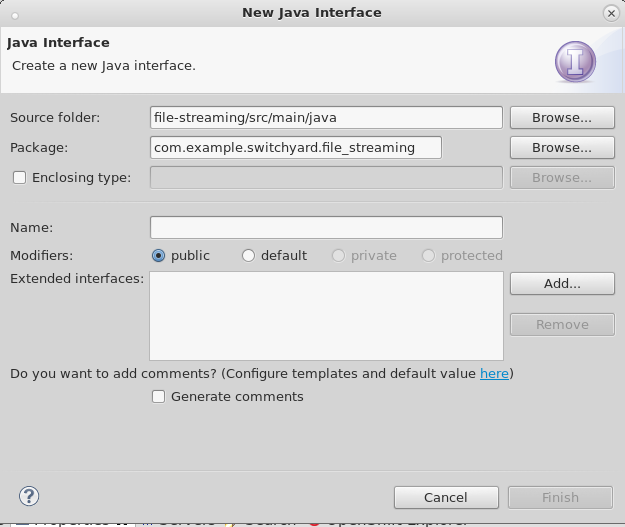Fuse 6 is no longer supported
As of February 2025, Red Hat Fuse 6 is no longer supported. If you are using Fuse 6, please upgrade to Red Hat build of Apache Camel.6.2. Component Contracts
- Java: Using a Java interface.
- WSDL: Using a port type in a WSDL file.
- ESB: Using a virtual interface definition. (No real file is used).
- argument: If used, this is the message content. It is optional as there can be operations that don’t expect a message (for example, REST GET, Scheduled operations). Used in Exchanges of type IN_ONLY and IN_OUT.
- return type: If used, this is the message content for the response. Used only in Exchanges of type IN_OUT.
- exceptions: If used, this is the message content for the response in case of an Exception. Used in Exchanges of type IN_ONLY and IN_OUT.
Java contract
A Java contract is defined by a Java Interface.
WSDL contract
A WSDL contract is defined by a port type in a WSDL file.
ESB contract
An ESB contract is a virtual contract (no file required) that declares the types of the input, output and exception types.


